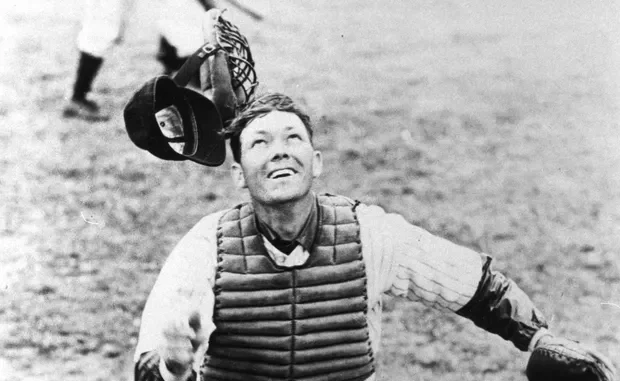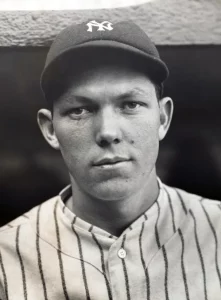
Arguably the most underrated Yankee ever, Bill Dickey was the backbone of one of the most successful eras in franchise history.
Name: William Malcolm “Bill” Dickey
Position: Catcher
Born: June 6, 1907 (Bastrop, LA)
Died: November 12, 1993 (Little Rock, AR)
Yankee Years: 1928-43, 1946
Primary Number: 8
Yankee Statistics: 1789 G, 7065 PA, .313/.382/.486, 127 OPS+, 126 wRC+, 1969 H, 202 HR, 343 2B, 72 3B, 1209 RBI, 678 BB, 465 CS, 47 CS%, 56.3 bWAR, 56.1 fWAR
Biography
There may be no more underrated Yankee than Bill Dickey. Despite being one of the best players in baseball in his era, his tenure was often overshadowed by the legendary performances of Babe Ruth and Lou Gehrig on his own team. After his playing career, the Yankees did retire his No. 8, but not before also giving to another catcher who became an even bigger franchise icon in Yogi Berra.
Dickey got the nickname “The Man Nobody Knows” more for his quiet and reserved personality, although it’s also somewhat apt for his status among other Yankee legends. However in almost any other any and on almost any other team, he would be considered among the inner circle of franchise icons. He may not always get the recognition among the Yankees’ greats, but Bill Dickey absolutely deserves his place among them.
Arkansas Boy in a Baseball Family
One of seven children of John and Laura Dickey, William Dickey was born in Louisiana in 1906. However, he primarily grew up in Arkansas, where the family moved to so John could work as a railroad brakeman.
From a young age, Bill was involved in baseball. His father had played semi-professional baseball, as did his older brother, Gus. Bill wouldn’t even be the only major leaguer to come out of his family, as a younger brother, George, would play six MLB seasons for the Red Sox and White Sox.
Dickey got involved playing second base for his town team as a youngster, and went on to pitch in high school. At Little Rock College, he both pitched and played on the football team. His big break truly came when a friend suggested he fill in at catcher for a semipro team in Hot Springs, Arkansas. Despite some initial hesitancy, Dickey quickly took to it, and soon caught the eye of the minor league Little Rock Travelers, who inked a deal with the 18-year old in 1925.

Over 20 games across the 1925 and ‘26 seasons, Dickey impressed in Little Rock, earning promotions to the Muskogee Athletics and the Jackson Senators. With Jackson in 1927, Dickey put in a solid season at catcher both offensively and defensively. Despite that, Jackson waived their rights to him after that season, which would up being very fortuitous for a certain franchise coming off a year so famous that it earned a nickname.
Jackson, along with Little Rock where he started out, had an agreement with the White Sox. Yet, Jackson declining Dickey allowed Yankee scout Johnny Nee to swoop in. Nee told GM Ed Barrow that he would “quit scouting if (Dickey) did not make good.” That review saw the Yankees make the bet and signed the catcher for $12,000.
After starting the 1928 season back in Little Rock, the Yankees moved Dickey to a brief pit stop with the Buffalo Bisons before calling him up in August. He made his MLB debut as a late inning replacement for Benny Bengough, going 0-for-2. He stayed in a bench role for the remainder of that season, recording his first hit on August 24th against the St. Louis Browns. While he didn’t appear in the Yankees’ sweep of the Cardinals in the 1928 World Series, Dickey was on the roster for the first of his many championships.
Becoming a Star
After initially opening the 1929 season in a similar bench role, Dickey recorded an RBI single in his first appearance of the year as a pinch hitter on April 26th. Two days after that, he got his first major league start, recording two hits. Even though the Yankees had some great times prior to Dickey’s arrival, the catcher’s spot was very much there for the taking, and Dickey took it.
In his first full season in the major leagues, Dickey recorded a .324/.346/.485 line in 130 games as he quickly cemented himself as the Yankees’ regular catcher. He also put up a nice defensive season behind the plate, earning Miller Huggins’ trust, before the manager’s passing and the team’s eventual second-place finish.
Without Huggins, the Yankees were again stuck in second place in 1930 under the guidance of former Yankee pitcher Bob Shawkey. That was through no fault of Dickey, who put up another big season. The catcher hit .339/.375/.486 (120 OPS+) in 109 games.
The 1931 season saw Joe McCarthy take over as Yankee skipper, although they wouldn’t ascend back to the AL pennant just yet. Dickey’s .327 batting average and 119 OPS+, along with catching 46 percent of runners on stolen base attempts saw the backstop named by the Sporting News as a catcher on their All-Star team.
Leave a Reply